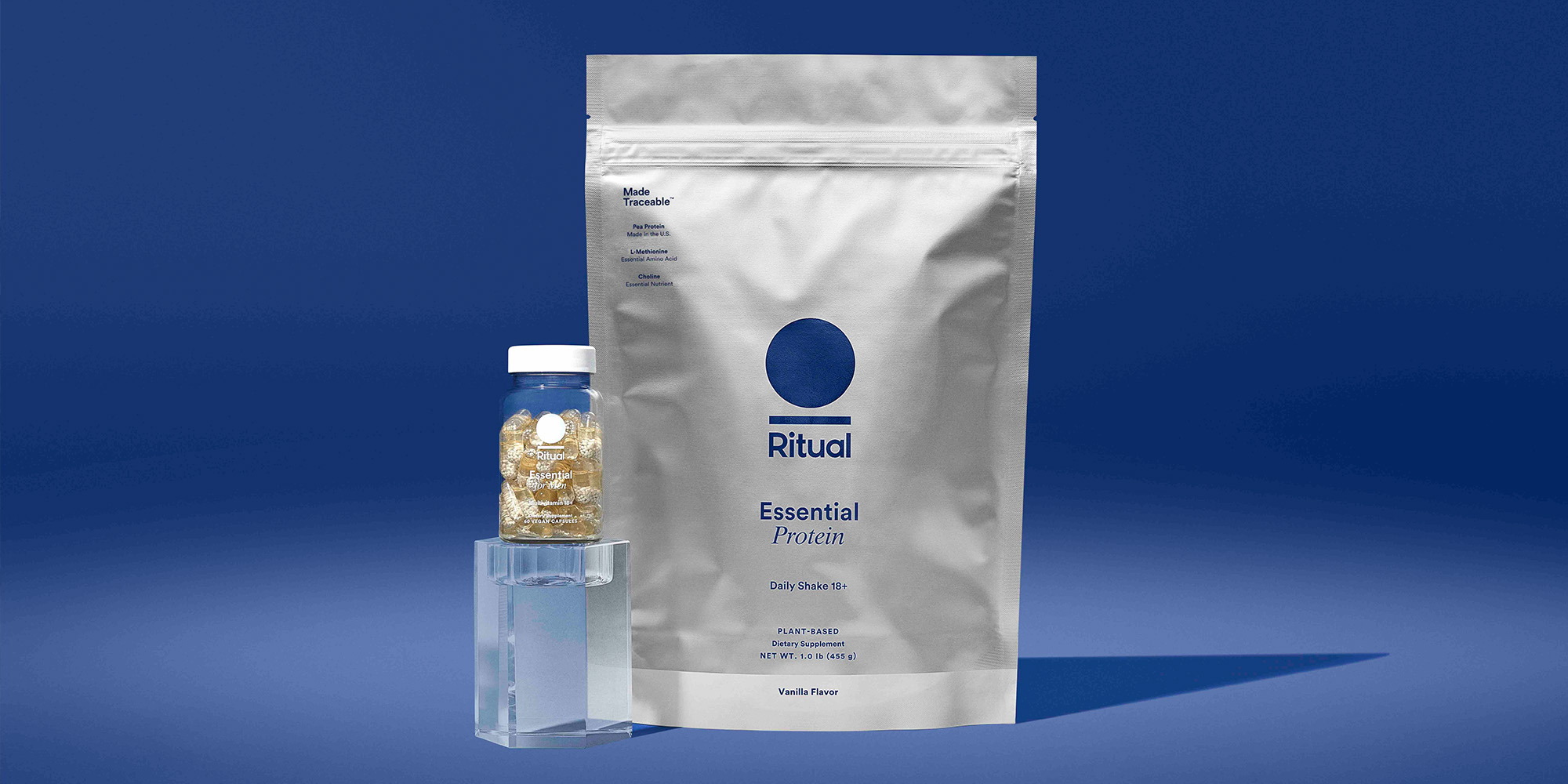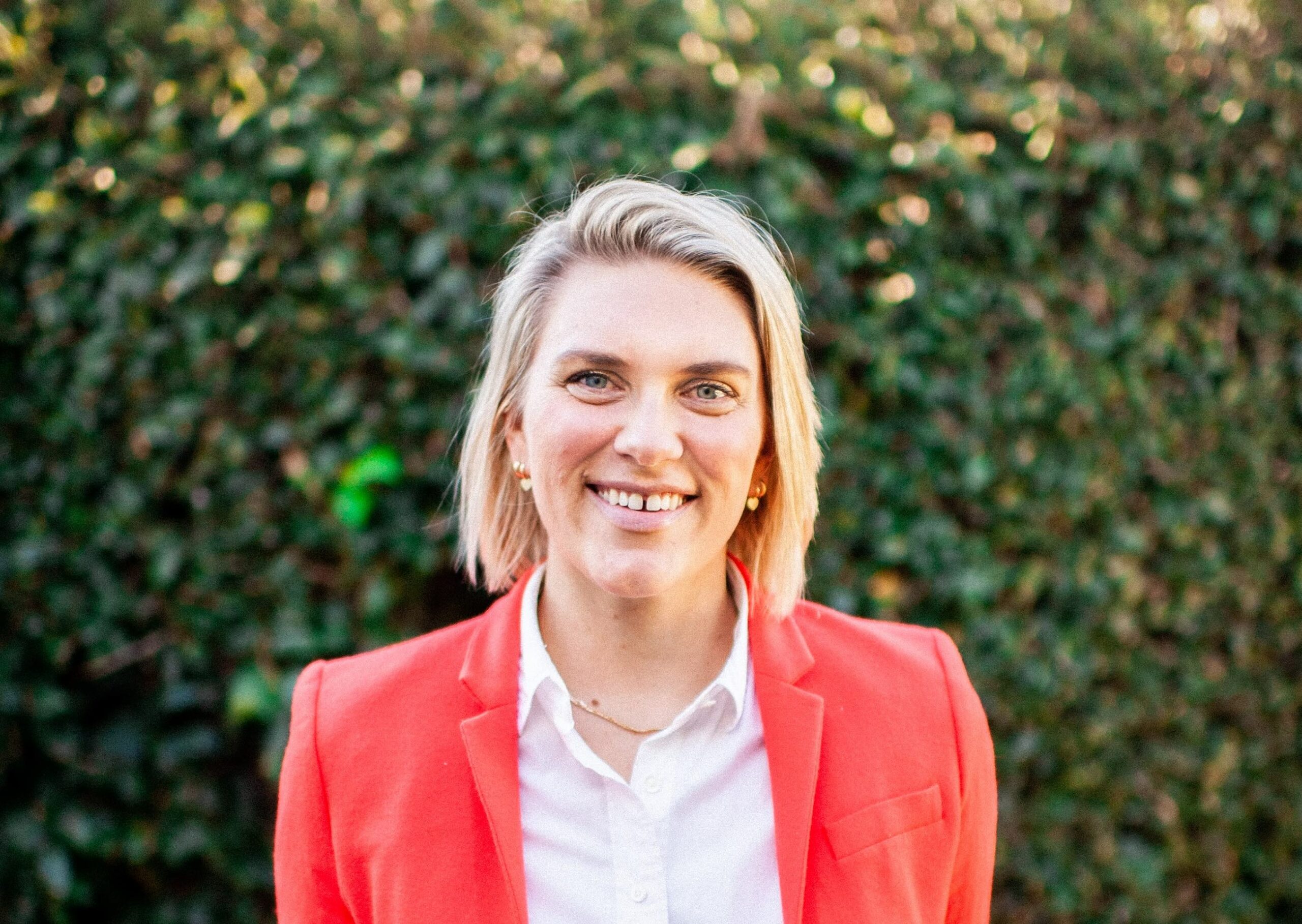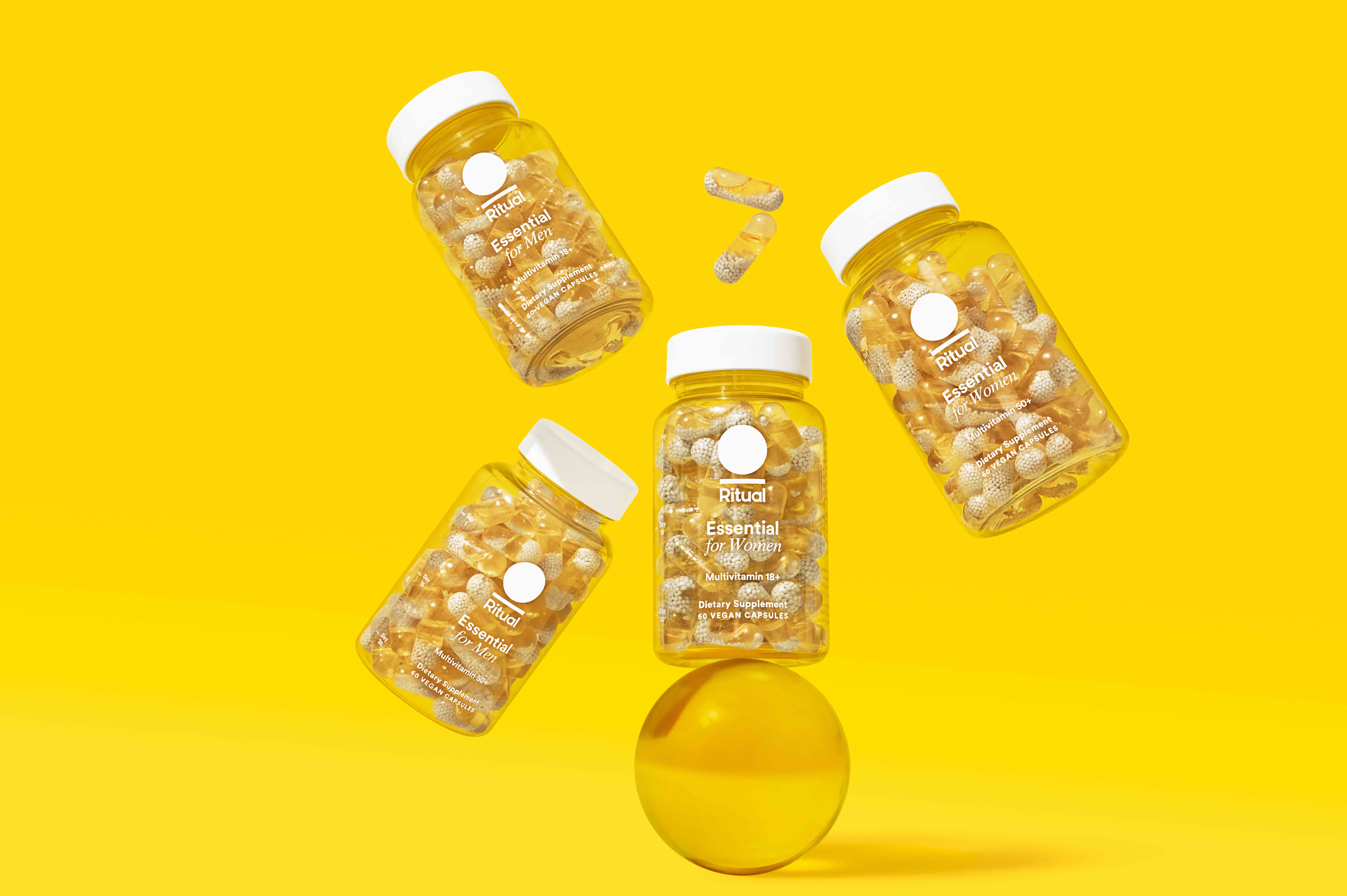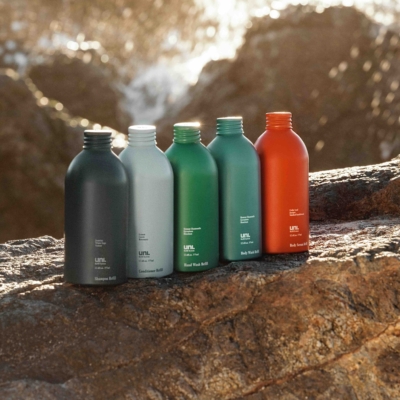
Ritual’s Lindsay Dahl Busts 5 Of The Biggest Sustainability Myths In CPG
Conventional wisdom often doesn’t hold up when the assumptions underlying it are put to the test. While scrutinizing the consumer packaged goods industry’s sustainability assumptions wasn’t the goal of product-level carbon footprint assessments commissioned by supplement brand Ritual, they have the effect of doing so. Armed with information from those assessments conducted by carbon footprint management platform PlanetFWD, we asked Lindsay Dahl, chief impact officer at Ritual, to identify some of the biggest CPG sustainability myths that should be busted. Below, she dismantles five of them.
Myth 1: Glass Packaging Is Always Better Than Plastic Packaging
Comparing glass packaging versus post-consumer recycled (PCR) plastic, Dahl says, “Glass is much more carbon intensive, especially based on where it’s primarily produced and shipped from, than post-consumer recycled plastic. There’s a strong anti-plastic sentiment within the consumer base, which I understand, we’re not here to defend the plastics industry, but shedding light on and telling public stories around here’s what science shows us around the carbon impacts about these different packaging materials hopefully can help getting consumers to ask harder and different questions of the brands that they purchase from.”

Myth 2: Large Recyclable Packaging Is Always More Sustainable Than Smaller Landfill-Bound Packaging
“I’ll give an example. We did a comparison with a traditional protein powder plastic jug. It’s big in format, and it goes into the recycling bin. People think that that’s more sustainable that we have a collapsible [foil laminate] bag that you scoop out of because it is not curbside recyclable, but it’s estimated 5% to 9% of plastic that we put curbside is actually recycled, and the rest of it is landfilled. So, think of the volume of that plastic ending up in a landfill and 95% of those instances versus a flat plastic bag, and it’s also much more carbon intensive to create the plastic jug and to ship it. People are like, ‘Oh, these plastic films for my food bags, I don’t like them, I’m putting them into the trash.’ Oftentimes that’s a bigger win than those larger recyclable curbside plastic materials.”
Myth 3: Sustainable Efforts Are Always More Expensive Than Going The Traditional Route
“Sometimes sustainability can be expensive, and sometimes it can actually save the business money. Investing in roles like mine cost the business money, and in certain cases purchasing more sustainable ingredients and raw materials come at a price premium because they’re harder to grow or to harvest in a sustainable fashion. Then there’s instances like certain packaging materials or reducing the weight of the cardboard shipper box that actually will save the business money and also reduce carbon over time. So, it really depends. In some cases, for the leaders within certain categories, first it comes at a premium, and then over time costs come down.”
Myth 4: Lab-Made Ingredients Are Always Worse Than Farm-Cultivated Ingredients
“Just because something is lab-made doesn’t mean it’s unsafe, and that can also be translated to the sustainability. So, the life cycle assessments show that a lot of naturally derived botanicals and ingredients that are farmed are actually very carbon intensive…Nothing is footprint free, for sure, but how big is that footprint? So, I’ll give an example. If you think about the water, energy, fertilizers, resources that go into growing a crop, harvesting it, processing it multiple different times in order to get it into a raw material format that is ready to even be an input into a beauty or wellness product, that entire system is incredibly resource intensive versus if you have two salts that can be combined in a lab to make something different.”

Myth 5: Carbon Offsets Always Zero Out Companies’ Carbon Emissions
“Carbon offsets aren’t going to solve the climate crisis. The term ‘offset’ is actually misleading, and we minimally use it, but we what we talk about instead is investment in renewable energy infrastructure. So, is it helpful for businesses like Ritual to support wind projects in South Dakota? Absolutely. Those measures to reduce our carbon and energy used here in the United States are incredibly important. Long gone are the days where companies think, ‘Oh, I can just spend a bunch of money, offset a bunch of stuff, and there I’ve checked a box, I don’t have to think about climate anymore,’ rightfully so.”





Leave a Reply
You must be logged in to post a comment.